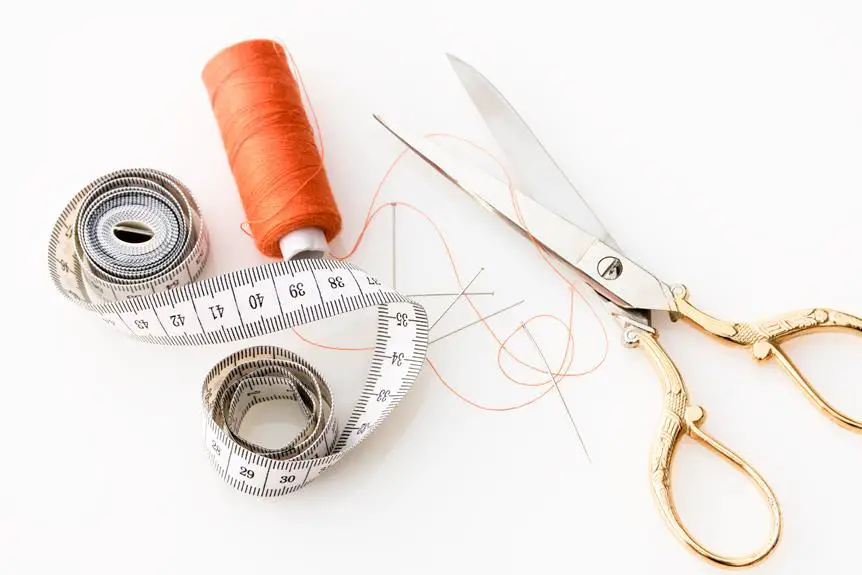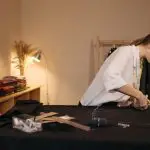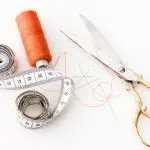If you've ever wondered about the differences between shears and scissors, you're not alone.
Understanding the nuances between these two cutting tools can elevate your mastery of the craft.
This guide will delve into the unique features and ideal uses of both shears and scissors, providing you with a comprehensive understanding of which tool may be better suited for various tasks.
Whether you're a seasoned professional or just beginning to explore the world of cutting instruments, this exploration will equip you with valuable insights to make informed decisions about your cutting needs.
Key Takeaways
- Shears are designed for heavy-duty cutting, while scissors are used for lighter, more intricate work.
- Shears have a larger thumb hole and a smaller finger hole for more control and power, while scissors have similarly sized finger holes for precise and delicate cuts.
- Shears are suitable for tasks that require strength and precision, while scissors are ideal for intricate and detailed work.
- Shears are best used for crafting applications, precision cutting, textile work, and gardening projects, while scissors are best used for cutting everyday materials, fabric, detailed work, and DIY projects.
Understanding the Key Differences
Why are shears and scissors often confused, and how can you easily distinguish between the two?
Shears and scissors are both essential crafting tools, particularly in professional hairstyling techniques. Despite their similar appearance, they serve different purposes. Shears are designed for more heavy-duty cutting, such as trimming hair, while scissors are typically used for lighter, more intricate work.
The main difference lies in the size and the shape of the finger holes. Shears generally have a larger finger hole to accommodate the thumb and a smaller finger hole to accommodate the other fingers, providing more control and power for cutting thicker materials. Scissors, on the other hand, have similarly sized finger holes, allowing for more precise and delicate cuts.
When it comes to professional hairstyling techniques, the choice between shears and scissors often depends on the specific task at hand. Understanding these differences is crucial for mastering the art of hairstyling and crafting in general. By recognizing the unique features of shears versus scissors, you can ensure that you're using the right tool for the job, ultimately improving your overall efficiency and precision.
Pros and Cons of Shears
When considering the pros and cons of shears, it's important to weigh the benefits of their heavy-duty cutting capabilities against their potential limitations. Shears are designed for precision cutting and are often favored for their ergonomic design, making them comfortable to use for extended periods. However, there are some drawbacks to consider as well. Below is a table outlining the pros and cons of shears:
| Pros | Cons |
|---|---|
| Heavy-duty cutting | Larger and bulkier |
| Precision cutting | Less maneuverable |
| Ergonomic design | Not suitable for fine |
| detailed work | |
| May be more expensive |
Shears are an excellent choice for tasks that require strength and precision, such as cutting through tough materials or fabric. The ergonomic design of shears also reduces the strain on your hand and wrist during prolonged use. However, their larger size and bulkiness may make them less suitable for intricate or fine detailed work. Additionally, high-quality shears can be more expensive than standard scissors. Consider these factors carefully when determining if shears are the right tool for your specific needs.
Pros and Cons of Scissors
For precise cutting tasks in your crafting or household projects, scissors offer a lightweight and maneuverable option. Scissors are designed with an ergonomic grip, allowing for comfortable and extended use without causing hand fatigue.
The precision cutting provided by scissors makes them ideal for intricate and detailed work, such as sewing, embroidery, or paper crafting. The sharp blades of scissors are perfectly aligned, ensuring clean and accurate cuts on various materials.
Additionally, scissors come in a wide range of sizes, from small embroidery scissors to large dressmaking shears, catering to different cutting needs.
However, scissors may have some limitations. While they excel in precision cutting, they may not be the best choice for heavy-duty tasks such as cutting through tough or thick materials. Furthermore, some scissors may not be suitable for left-handed individuals, as they're often designed for right-handed users.
Despite these limitations, the ergonomic design and precision cutting capabilities of scissors make them indispensable tools for a wide range of applications in crafting, sewing, and household projects.
Best Uses for Shears
When using shears, carefully trimming delicate fabrics or meticulously cutting through thick materials becomes effortless. Shears are versatile tools that excel in various crafting applications and gardening projects.
Here are some of the best uses for shears:
- Crafting Applications
- Precision Cutting: Shears are perfect for intricate cutting tasks such as creating detailed patterns in fabric, trimming paper for scrapbooking, or cutting precise shapes in art projects.
- Textile Work: Whether you're working with silk, satin, or other delicate fabrics, shears provide the clean, accurate cuts necessary for sewing, quilting, and other textile crafts.
- Gardening Projects
- Pruning: Shears are ideal for pruning small branches, shaping bushes, and deadheading flowers in the garden.
- Harvesting: When harvesting herbs, flowers, or vegetables, shears offer a quick and efficient way to snip the stems without causing damage to the rest of the plant.
Shears are indispensable tools for anyone looking to achieve professional results in their crafting and gardening endeavors.
Best Uses for Scissors
You frequently use scissors for everyday tasks like cutting paper, plastic, or packaging materials with ease. However, scissors are also invaluable for cutting fabric and completing crafting projects. When it comes to cutting fabric, scissors with sharp, precision blades are essential for achieving clean, accurate cuts.
Whether you're a seamstress, quilter, or simply enjoy sewing as a hobby, a good pair of fabric scissors is indispensable. Crafting projects often require the use of scissors for tasks such as trimming paper, cutting out intricate shapes, or snipping threads. The precision and maneuverability of scissors make them ideal for detailed work, allowing you to create precise cuts with ease.
Additionally, scissors are versatile tools for a wide range of DIY projects, from scrapbooking and card making to creating intricate paper crafts. With the right pair of scissors, you can effortlessly tackle a variety of crafting endeavors, making them a must-have tool for any DIY enthusiast.
Frequently Asked Questions
Can Shears or Scissors Be Used for Cutting Hair Extensions or Weaves?
Yes, you can use either shears or scissors for cutting hair extensions or weaves. Both tools are suitable for different cutting techniques, but ensure proper care to maintain the integrity of the extensions.
Are There Any Specific Maintenance Techniques for Keeping Shears or Scissors in Optimal Condition?
To keep your shears or scissors in optimal condition, use proper sharpening techniques and rust prevention methods. Regularly sharpen the blades and store them in a dry place to prevent rust, ensuring they stay effective and durable.
What Are the Differences in Blade Angles Between Shears and Scissors, and How Do They Impact Cutting Performance?
Blade angles differ between shears and scissors, impacting cutting performance. Shears have wider angles for tougher materials, while scissors have narrower angles for precise cutting. Understanding these nuances ensures optimal performance and material compatibility.
Can Left-Handed Individuals Use the Same Shears or Scissors as Right-Handed Individuals, or Are There Specialized Options Available?
Left-handed individuals can benefit from specialized options like ergonomic designs. These are tailored to provide comfort and ease of use for left-handed users. Consider exploring left-handed options for a more tailored cutting experience.
Are There Any Safety Considerations to Keep in Mind When Using Shears or Scissors for Crafting or DIY Projects?
When using shears or scissors for crafting or DIY projects, safety considerations are crucial. Pay attention to ergonomic design, use proper technique, and prioritize injury prevention. These factors are essential for a smooth and safe crafting experience.
- Where to Buy Sherpa Suede Fabric - July 12, 2025
- How to Draw or Illustrate the Texture of Suede Fabric - July 12, 2025
- What Is Baseball Suede Leather Fabric? - July 12, 2025







